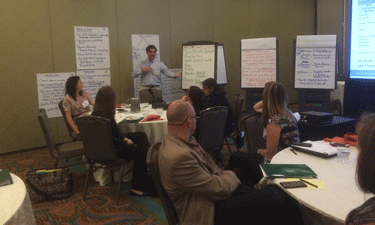 What do we conclusively know about the relationship between parks and the improved health of a community? Where does our knowledge fall short, and where do we need more research to determine a link between parks and healthier living? How do we effectively communicate what we know about the links between parks and health to elected and appointed officials as we make the case for park agency funding or program support?
What do we conclusively know about the relationship between parks and the improved health of a community? Where does our knowledge fall short, and where do we need more research to determine a link between parks and healthier living? How do we effectively communicate what we know about the links between parks and health to elected and appointed officials as we make the case for park agency funding or program support?
NRPA and Active Living Research convened a blue-ribbon group of academic researchers, park and recreation professionals, and policy experts to discuss these questions on February 26 in San Diego. The goal of this day-long workshop was to provide the foundation for new tools and strategies for park and recreation professionals and advocates to communicate with the public and their elected officials about the health-related benefits of parks. A recent Active Living Research paper, titled “Co-benefits of designing communities for active living: an exploration of literature,” offers a thorough review of existing research about the many co-benefits of parks, and this helped to frame the day’s discussions.
Based on existing research, it’s clear that living close to parks and trails can provide health benefits. We also know that what’s in a park impacts how it’s used by the public, and that parks provide many social benefits that positively affect citizens and their mental well-being. However, it’s clear that there are many areas that require more research, and defining how the research community can effectively address these gaps in our knowledge will be the focus of meetings NRPA will convene in the coming months. For example, those in attendance at the San Diego event agreed we need more in-depth research that describes how different demographics use parks as well as research about how effective programming can drive park use and improved health outcomes.
One of the critical areas where the research community will rely on park and recreation professionals is in evaluating the outcomes of master planning processes and capital improvements that aim to improve citizen health. While more and more local plans incorporate such improvements, effective evaluation of these strategies and resulting investments is less consistent, and it represents an enormous opportunity lost for understanding how changes in design and the built environment impact the health of the individual.
Kanat Tibet from The California Center for Public Health Advocacy said, “This event and other events like it are important for linking those doing research about the health impacts of parks and recreation with park and recreation professionals and advocates. The sharing of ideas among these groups gives us all important insight into what works and what we need to learn more about — or what we need to rethink entirely.”
Moving forward, NRPA will work on turning the outcomes of this workshop into communications tools and products for our members to use as they work with the public and their elected officials. Be on the lookout for news about these tools, as well as chances to participate in their development — we’ll need your help to produce easy-to-use and convincing messaging that you can put to use to make your community healthier.
Travis Smith, Ph.D., is NRPA’s former Vice President of Research.

